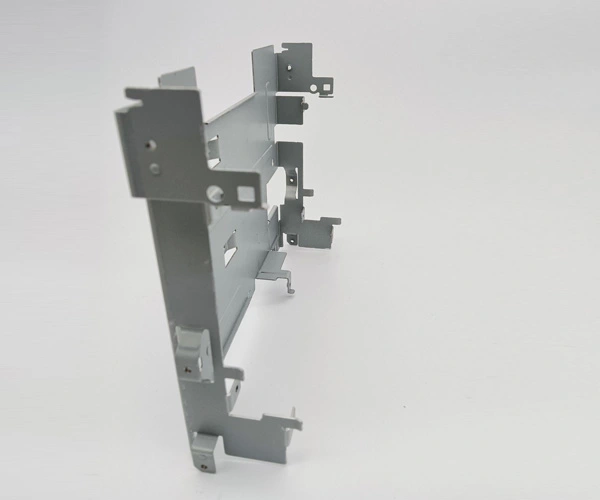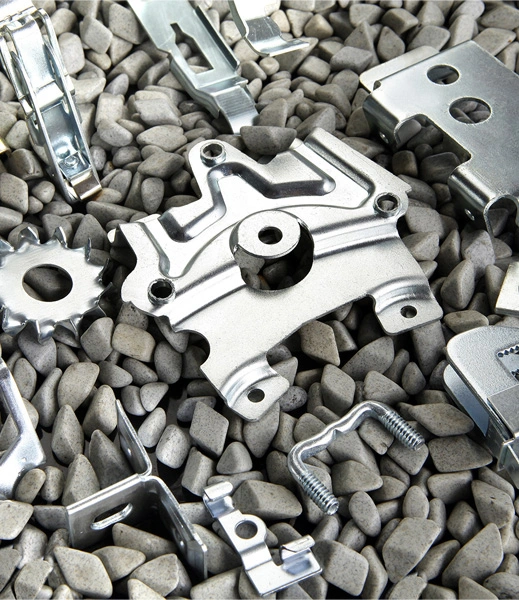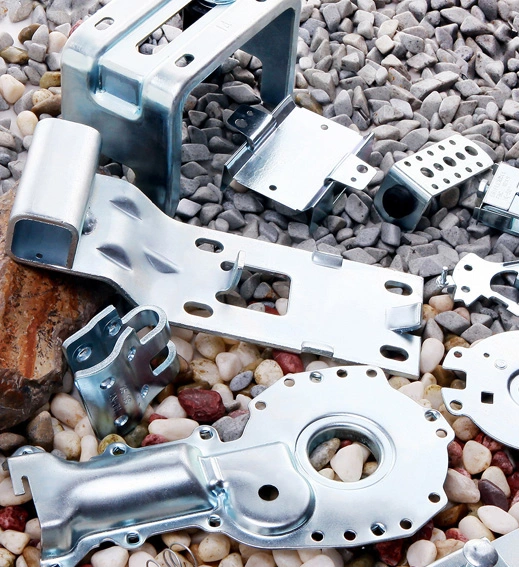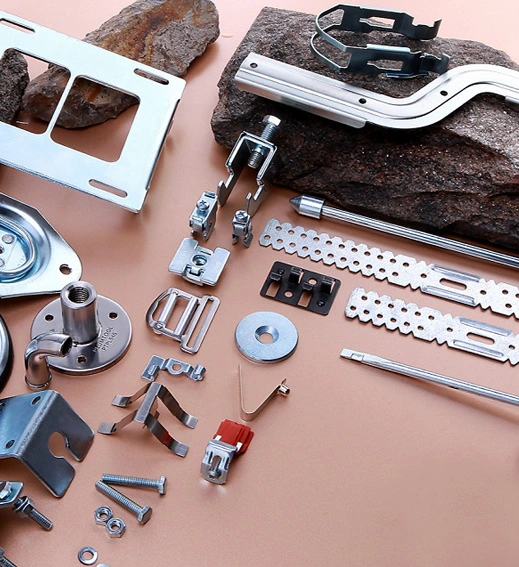

Material: carbon steel /stainless steel /aluminum /copper /galvanized sheet available
Thickness: 0.8mm
Tolerance: ISO 2768-m
Manufacturing process: compound stamping
Surface treatment: powder coating /painting /anodization /sandblasting /zinc coating etc available
Stainless steel stamping, aluminum stamping, copper and brass stamping
1. Mold structure
Stamping composite die is a complex mold structure consisting of an upper die and a lower die. The upper and lower molds closely cooperate to form a stamping space for stamping processing. A mold usually includes multiple components such as a concave mold, a convex mold, a stripper plate, and a lower template, and each component needs to be precisely matched to ensure the accuracy and stability of stamping processing.
2. Material feeding
Before conducting stamping processing, the raw materials need to be sent into the mold. The material feeding is usually completed by a conveying device, which delivers the raw materials to the designated location of the mold. To ensure the accuracy of feeding, the conveying device needs to be accurately matched with the mold to avoid problems such as material jamming or inaccurate feeding position during the feeding process.
3. Stamping processing
After the material is fed in, the upper mold moves downwards and closely fits with the lower mold, forming a stamping space. A punch is used to process materials, causing deformation or separation of the material and forming the required stamped parts. During the stamping process, the pressure and shear force between the convex and concave molds need to be controlled within a certain range to avoid mold damage or poor quality of the stamped parts.
4. Finished product discharge
After the stamping process is completed, the finished product needs to be discharged from the mold. The finished product discharge is usually completed by an ejector, which pushes the finished product out of the concave mold and is carried out of the mold by a conveying device. To ensure the smooth discharge of finished products, the ejector and conveying device need to be accurately matched with the mold to avoid the finished products getting stuck in the mold.
5. Mold reset
After the finished product is discharged, the mold needs to be reset, that is, the upper mold moves upwards and separates from the lower mold. The reset of the mold is completed by a pneumatic or hydraulic system. After the reset is completed, the mold can proceed to the next stamping process. To ensure the accuracy and stability of mold reset, pneumatic or hydraulic systems need to be regularly maintained and inspected.



